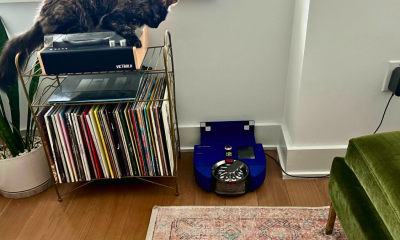Finance
More older Americans are filing for bankruptcy during retirement


Bankruptcy is crushing
retirement dreams.
De
Visu/Shutterstock
-
More older Americans are filing for bankruptcy, reports
The New York Times, citing a
study from the Consumer
Bankruptcy Project. -
Respondents of the study cited a decline in income, too
many healthcare costs, and too much debt as contributing
factors to their bankruptcy. -
But bankruptcy isn’t a cure-all when you’ve already
reached retirement age — many people struggle to ever regain
their financial footing, the study says.
Bankruptcy is crushing the retirement dreams for an increasing
number of older Americans.
Since 1991, the rate of people 65 and older filing for bankruptcy
has tripled, reports The New York Times, citing a
study from the Consumer Bankruptcy
Project. The study looked at 895 personal bankruptcy cases
and questionnaires from those aged 19 to 92.
“Older Americans are more likely than ever to find themselves in
bankruptcy court, seeking protection from creditors. Depending on
their age cohort, their rate of bankruptcy has increased between
200 and 300 percent since 1991,” write the authors of the study.
It’s due to a confluence of economic factors — including delayed
full Social Security benefits, an increase in out-of-pocket
medical spending, a rise in pensions replaced by 401(k) savings
plans, and dwindling incomes — that have off-loaded of the
costs of aging onto a generation with limited resources,
according to the study. Consequently, they turn to bankruptcy
court.
According to the study, the median wealth for over 65
bankruptcy filers is -$17,390. Non-bankrupt Americans of the same
age recorded a median wealth of more
than $250,000.
While the number of older bankruptcy filers was only
100,000 a year between February 2013 to November 2016, it
reflects the state of “financial distress” for others, writes The
Times reporter Tara Siegel Bernard. The study found an increase
in the number of bankruptcy filings for the next generation, Gen
X, as well.
But bankruptcy isn’t a cure-all when you’ve already reached
retirement age, the study found. “
For older
Americans, bankruptcy is too little too late. By the time they
file, their wealth has vanished, and they simply do not have the
enough years to get back on their feet.”
Debt, healthcare costs, declining
income, and supporting family have contributed to
bankruptcy
Respondents of the study cited a decline in income, too many
healthcare costs, and too much debt as contributing factors to
their bankruptcy.
Not only have healthcare costs soared over the past several
decades, Business Insider previously
reported, citing the Bureau of Labor Statistics, but baby
boomers are entering their senior years with greater health
risks, such as “higher rates of obesity and diabetes and lower
rates of very good or excellent health status,” according to the
2017 United Health Foundation
study. This can lead to unexpected medical expenses.
Respondents also attributed their bankruptcy to spending
money to help children or older parents. Business Insider previously
reported that one of the most pressing problems facing baby
boomers is the need to care for their elderly parents, which
comes at a huge cost.
One bankruptcy lawyer also told The Times that many parents
cosign loans for their children. He said older people with
student loan debt is something he didn’t two or three decades
ago.
But, considering that college tuition has
more than doubled since the 1980s, it makes sense. The
average student debt per graduate who took out loans is higher
than ever, at $17,126, Business Insider reported in
November. From 2000 to 2012, the percentage of students
taking out student loans increased by 10%, and they began
borrowing more money too, according to a report by the American Academy of
Arts & Sciences.
The Times also cited an Urban Institute analysis that found
an increasing number of people have more debt as they enter
retirement years, especially because of their mortgage — the
percentage of those carrying mortgage debt nearly doubled from
1989 to 2016.
With working baby boomers putting away only 5% of their
income, according to a NerdWallet study,
they aren’t left with much of a cushion should they run into
a financial problem.
And, according to a survey by the Insured Retirement
Institute, only 23% of baby
boomers think their savings will last through retirement
or that they’ve done a good job preparing for retirement — and
only 54% had any retirement savings at all.
These financial problems are compounded by the fact that
baby boomers are expected to live
longer than previous generations. Because of this, those who
plan to retire in their mid-60s to early 70s need to have enough
money saved up for five to 10 years more in retirement than they
might have in the past.
-

 Business3 days ago
Business3 days agoAPI startup Noname Security nears $500M deal to sell itself to Akamai
-

 Business6 days ago
Business6 days agoYoshi Mobility has come a long way since gassing up cars on the side of the road
-

 Entertainment3 days ago
Entertainment3 days agoHow to watch ‘Argylle’: When and where is it streaming?
-

 Business4 days ago
Business4 days agoUS think tank Heritage Foundation hit by cyberattack
-

 Entertainment3 days ago
Entertainment3 days agoNASA discovered bacteria that wouldn’t die. Now it’s boosting sunscreen.
-

 Entertainment4 days ago
Entertainment4 days agoCrypto and taxes: Which forms you need to file
-

 Entertainment3 days ago
Entertainment3 days agoDyson 360 Vis Nav robot vacuum review: Dyson should just stick to upright vacuums
-

 Business7 days ago
Business7 days agoSprinto raises $20M to bring automation to security compliance management




















